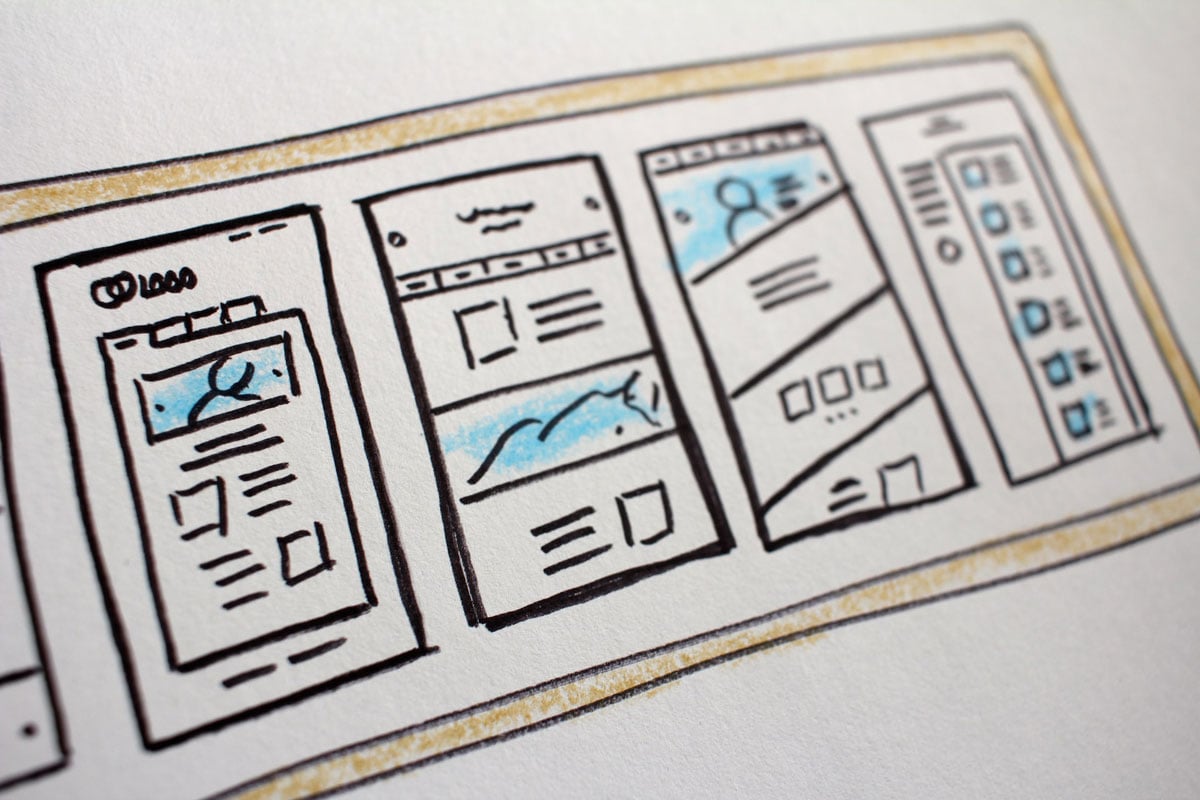Know This Before You Redesign Your Website


Can your website capture a visitor’s attention in 0.05 seconds? If not, it may not matter how much traffic you push to your site with ads or content: Those visitors will not stick around.
You may be considering a redesign to your existing website for many reasons. Maybe your site looks outdated, or perhaps you’re looking to make your site easier to manage with a better CMS (Content Management System). Whatever your goals for updating your website might be, one rule always holds true: Rushing to market with a website redesign before doing the necessary groundwork can be costly in more than one way.
Even the coolest-looking website isn’t going to solve your growth challenges if it is not capable of converting visitors to leads. The key to a high-performing website is not just about how good it looks—you need a site aligned with your brand’s message, attracting and holding onto the visitors that are best suited to work with your business.
From websites that need a complete overhaul to minor upgrades, you must consider a few tips before starting the redesign process. This post will outline the seven critical things you need to know before redesigning your website.
Before You Redesign Your Website:
What Makes a “Good” Website?
The question of what makes a “good” website is a loaded one. It is easy to think that you can tell the difference between a good website and a poor one, but as we’ve discussed above, even the best-looking site can be poorly designed if it does not convert visitors into leads. In short, a “good” website is a website that achieves your business goals.
A few qualities that strong websites tend to have:
- Functional Design: Just looking good isn’t good enough. Your website should look good, yes. It should come across as a polished, professional representation of your brand. Beyond that - for the site to be truly successful - ensure that it is not only attractive but functional in that every page has a clear purpose.
- Mobile Optimization: A large percentage of the population no longer uses a computer to access websites. In 2021, almost 55 percent of all internet traffic came from mobile devices. Depending on your industry, this number may be higher or lower for your specific audience. Still, if your website isn’t easily accessible on a mobile device, you’re likely delivering a sub-par experience to upwards of half of your audience.
- Clear Calls to Action: The purpose of your website is to encourage visitors to take action, and they cannot appropriately take that action if it is unclear what action they are meant to take—and why they should take it. Ensure your website provides calls to action aligned with your marketing and business goals.
- Search Engine Optimization: Without visitors, it doesn’t matter how strong your website is. Take steps to optimize every page of your website so it can be easily located and enticing to click through from a search engine. Use page titles, alt tags on images, and more to make your site as simple as possible for Google and other search engines to catalog.
1. What do you want your website to do for your business?
Before you can redesign your website to improve performance, you first need to answer one simple question: What exactly are you hoping to improve?
Establish goals that you hope to achieve with your website. Your goals should be SMART: Specific, Measurable, Attainable, Relevant, and Time-bound. To illustrate, I want our website to convert more leads, which is not a SMART goal. A better goal might be, "I want a specific landing page to convert twelve new leads within the first three months of launch," which is a much more appropriate type of goal to set.
When setting goals for website performance, many businesses want to generate traffic and deepen engagement. The more site traffic you have and the higher quality content you have, the better your chances of converting prospects into loyal customers. But how do you know if your current website is measuring up or not?
One way to determine your website’s performance is by tracking your traffic through tools like Google Analytics. Such resources can help you track quantitative data such as organic traffic, your growth rate (if applicable), and a host of other key performance indicators (KPIs) like average session time, bounce rate, and the profile of your visitors.
2. How is your website currently performing?
Setting goals is all well and good, but it can be challenging to set an appropriate goal if you don’t know your starting point.
That’s why it’s vital to start with your baseline when enhancing or rebuilding your website. A baseline is the performance of your existing website before a redesign. It exposes the aspects of your website that work and do not work.
For example, if a landing page is performing well, it may only need some minor tweaks to boost conversion rates. Alternatively, if a call-to-action (CTA) on your site is getting abysmal click rates, it may be worth scrapping that asset entirely and starting over.
By understanding how well your website is performing, you can set clear objectives for how you want to grow your business.
3. What website redesign efforts have you undertaken previously?
You do not want to reinvent the wheel—especially if that wheel was poorly constructed in the first place. Before starting your website redesign, assess your initial website objectives from your first site launch or last redesign efforts.
When you created the site you have now, what were your goals? If your goal was to increase brand awareness, drive sales-qualified leads, or boost online sales, was it able to do any of those things? Why or why not? Can you quantify this answer, or is this a feeling?
By knowing how your site performs in these specific areas, you can pinpoint which aspects of your current site are not working and set measurable goals for the future. You will also see which strategies have added value to the business and should be retained or strengthened.
4. What are the biggest challenges with your current website?
You’ve taken baseline data, established some goals, and analyzed your past efforts. Now, it’s time to take a long, hard look at your website and determine your site design Achilles Heel. What is the biggest challenge you need to overcome when redesigning your website for your new site to succeed?
For instance, if you observe a high bounce rate, this could indicate that visitors are dropping by your site—and doing only that. They are leaving without performing the specific action you want them to take, such as clicking on a link or filling out a form. You may have quite a few “dead zones” with content that isn’t compelling enough to make your audience want to stay on and browse your pages further. Or it may even be that a cluttered site design doesn’t naturally guide the visitor to the desired action.
By determining which design elements deliver results, you can decide what other features need to be changed.
5. Do you know your audience?
When your site isn’t performing the way you want it to, there are a few possible reasons why. The first is that you may not be attracting the right audience. Do the benefits from your products or services continue to be relevant to the customers you are trying to reach? If your site traffic is made up of your target audience, but their visits are not translating to actual conversions, you may not understand your customers as well as you think.
A great first step in gaining a better understanding of your audience is to build out the buyer journey. The buyer journey helps you tap into the motivations and behaviors that guide customers to purchase and can be a quantifiable win for businesses. With a solid buyer journey, you can not only build a great website but align your site with other marketing and brand initiatives. With this resource, you can demonstrate what problems you solve for your customers and why you are the obvious choice over your competitors.
Other rich sources to improve your understanding of customers are online surveys - to secure their preferences - and industry reports - to stay abreast of emerging trends. For instance, you may check out search trends relevant to your business on Google Trends, an accessible data exploration tool.
6. Are you ready to be customer-centric?
The purpose of your website is not only about promoting your brand but being customer-centric and connecting with your target audience. Being customer-centric means that their interests, needs, and desires take precedence when you redesign your website. Instead of leading with your products or services in a way that feels pushy or inauthentic, you should show them how you help them win.
To do this effectively, you need to put yourself in your customers’ shoes. This means knowing them from the inside out, their problems, and what drives them to take action. When you strategize your website’s design around what will deliver the most value to your customers, they will feel that you understand them. They will see your desire to provide solutions to their problems rather than simply wanting to sell something to them.
7. Have you established a clear brand narrative?
For customers to buy into your brand’s message, they need to find themselves in your brand narrative. This may be done by relating your company’s history and how it has provided value to your audience over time. It is the source of what makes your company different from your competition.
Nike is one great example of a brand that used a compelling narrative with its Just Do It campaign. They tapped into the positive human emotions inherent to the sports experience. The brand told a relatable human story about the joy of sports and fitness. People were able to associate the motivational slogan and the Nike brand with the prospect of achieving greatness.
Taking The Crucial Step to Redesign Your Website
Once you have a baseline, website goals, and a solid buyer’s journey that reveals how you help solve your customer’s problems, you will use this information to develop a plan to redesign your website. It is essential to invest in these elements and get them right. Without an accurate baseline, realistic website goals, or a buyer’s journey that reflects your target audience, it will be challenging to redesign your website in a way that actually provides meaningful results.
At Digital Momentum, we believe in the painstaking process of building your buyer’s journey before anything else. This is at the root of our Digital Growth System™ and how we help our customers win. As the premier digital agency for the racing industry, we combine customer- and user-centric website design and development principles with inbound marketing methodology to deliver winning digital marketing solutions.
Our customers rank among the best and brightest organizations and brands in the racing industry. Whether you are about to begin your digital marketing journey or are looking to boost your internal marketing capabilities and take your business to the next level, we can help you accelerate your sales and marketing growth. If, like us, winning is your only option, watch this Digital Growth Framework video and take the clear next step to success.
